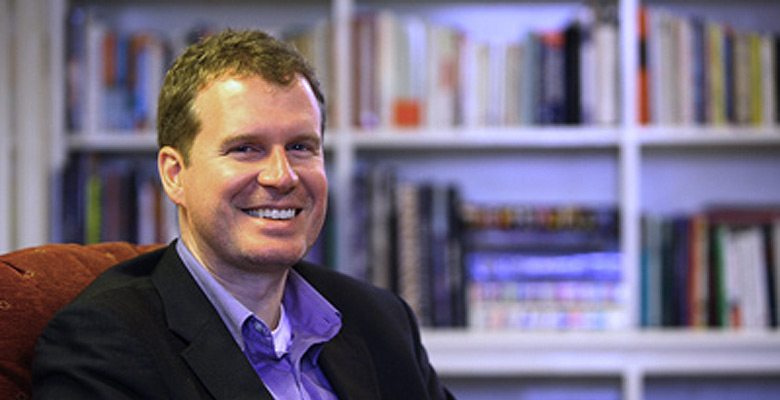GLENDALE, Calif.—Cambridge Professor of Linguistics Bert Vaux, in collaboration with the Salmast Heritage Association (SHA), conducted a week-long research project on the dialect of Salmast, also believed to be the language of Historic Armenia.

The SHA identified nine Salmasttsi speakers of the dialect, arranged for appropriate space and technological support for interviews, and recorded individual and group sessions. The research subjects were from Häftvan, Mähläm, Sarna, Payajuke, and Akhtkhan.
Dr. Vaux studied phonetic as well as written vocabulary words and sentences, and recorded the variations between regional definitions and pronunciations. The totality of the information they shared was qualified as “priceless,” as native speakers of the dialect are aging and not easily accessible. Most importantly, the week-long field work on the Salmast dialect showed that many of the words and definitions brought to light by the nine Salmasttsi interviewees, are not found in Muradyan’s dictionary, the foremost authority on Armenian dialects.
Vaux received his PhD from Harvard where he taught for nine years. He is an internationally recognized expert in his field, is fluent in several languages including Armenian, has published several textbooks and numerous papers on such topics as Historical Linguistics, Phonology, Dialectology and related subjects. He enjoys working with native speakers to document endangered languages, especially dialects of Armenian, Abkhaz, and English.
Vaux’ partial list of publications includes: The Phonology of Armenian; The Armenian Dialect of New Julfa, Isfahan; Eastern Armenian, A Textbook; A Textbook of Western Armenian; Hamshetsma: The Language of the Armenians of Hamshen; The Armenian Dialect of Khodorjur; Vowel Harmony in the Armenian Dialect of Marash; Syllabification in Armenian, Universal Grammar and the Lexicon; Armenian Encyclopedia of Languages and Linguistics and more.
The SHA said that it is grateful to Vaux for his interest in the ethno-linguistic history of the Armenian language, for planning to further his research with a larger pool of Salmasttsi subjects in the near future, and for his commitment to write a book on the dialect of a province of Historic Armenia: Salmast.
Vaux’ unedited personal report to the SHA can be read below.
***
Report on Fieldwork Trip to Glendale
Bert Vaux
April 17, 2017
Following an initial visit to meet with representatives from the Salmast Heritage Committee at UCLA, in November of 2015, I arranged with committee chairman Sarkis Barkhoudarian, to return for a week of fieldwork with speakers of the Salmast dialect in Glendale, in March 2017. My primary goals for this second trip were to (i) establish who is still able to speak the dialect, and (ii) which of the features from the traditional descriptions are still alive, (iii) determine which elicitation methods work best with each individual speaker, (iv) collect basic stories and conversations, and (v) elicit items in Hovhannes Muradyan’s manual for collection of Armenian dialect materials (Հայերենի բարբառագիտական ատլասի նյութերի հավաքման ծրագիր, Երեվան 1977) from as many speakers as possible.
Significant progress was made on each of these fronts, thanks to the tireless efforts of the Salmast Heritage Committee, and a number of Salmasttsis living in the Los Angeles area. Vartkes Zakarian, who lived in Häftvan until the age of 20, kindly provided Salmast forms for the first 559 of Muradyan’s 778 questions, as well as a translation of Tumanyan’s story Սուտասանը (‘The Liar’), and four hours of recorded conversation. Armineh Keshishian, whose mother came from Äkhtkhan) provided and translated three stories written by her uncle Harutiun Zaghikian. Artush Allahverdian and Mosik Shahoian, both from Häftvan, each answered some fifty questions from Muradyan’s manual. Finally, we were able to make video recordings of dialogues in Salmast dialect, between Sarkis Barkhoudarian (Häftvan), Ruben Nazarian (Mähläm), and Vartkes Zakarian. Other interviewees were also able to provide Salmast dialect words which were not in Muradyan’s dictionary.
Preliminary findings from this visit suggest that enough speakers of the dialect remain to produce a proper book-length study parallel to those written for Maragha (Acharyan 1935) and Khoy/Urmia (Asatryan 1962). Though all of the speakers whom I worked with had left the Salmast area at a relatively early age, I was encouraged to see that many still possess features of the traditional dialect studied by Acharyan 100 years ago, such as տալվ talv ‘husband’s sister’; ընչու ənch’u ‘until’; ծըղզալ tsəghzal ‘to laugh’; and խառնիս kharnis ‘wedding’. Care will have to be taken, though, to factor out elements of Teheran Armenian, which were common in most individuals’ speech, such as producing էթում եմ [etʰum em] for էթաս եմ [etʰas em] ‘I go’.
Because the villages of the Salmast region had largely lost their Armenian populations by 1962, few speakers remain who actually lived in them. It is therefore a matter of some urgency that we collect as much as possible on the dialect while some speakers of this older generation remain. I hope to be able to carry out several more extended visits over the coming years to do this work, in collaboration with the Salmast Heritage Committee.

3 Comments To "Cambridge University Linguistics Professor Conducts Research on Salmast Dialect"
#1 Comment By Antoine S. Terjanian On May 15, 2017 @ 8:46 pm
Իշ տար ես? (How are you)… This is how you are greeted in Yeghegnadzor. Many of the villages and towns around Yeghegnadzor, Armenia are made of Armenians who returned to Armenia from Salmast and Khoy after the Russians signed the Turkmenchay treaty (1828) with the Persians.
These people are very proud to call themselves Khoyetsis and Salmastsis and still speak the dialect.
Thank you Professor Vaux for conducting this research, and thank you for the Salmast Association to have maintained their dialect in Glendale. Please come and visit us in Yeghegnadzor to see for yourself what these people have achieved
#2 Comment By Raffi On May 17, 2017 @ 6:42 pm
“Returned to Armenia”? Khoy and Salmast were just as much a part of historic Armenia as the Erivan Governorate of the Russian Empire.
#3 Comment By sarkis barkhoudarian On March 10, 2020 @ 3:04 am
It seems that Salmasteren dialect has similarity to Grapar